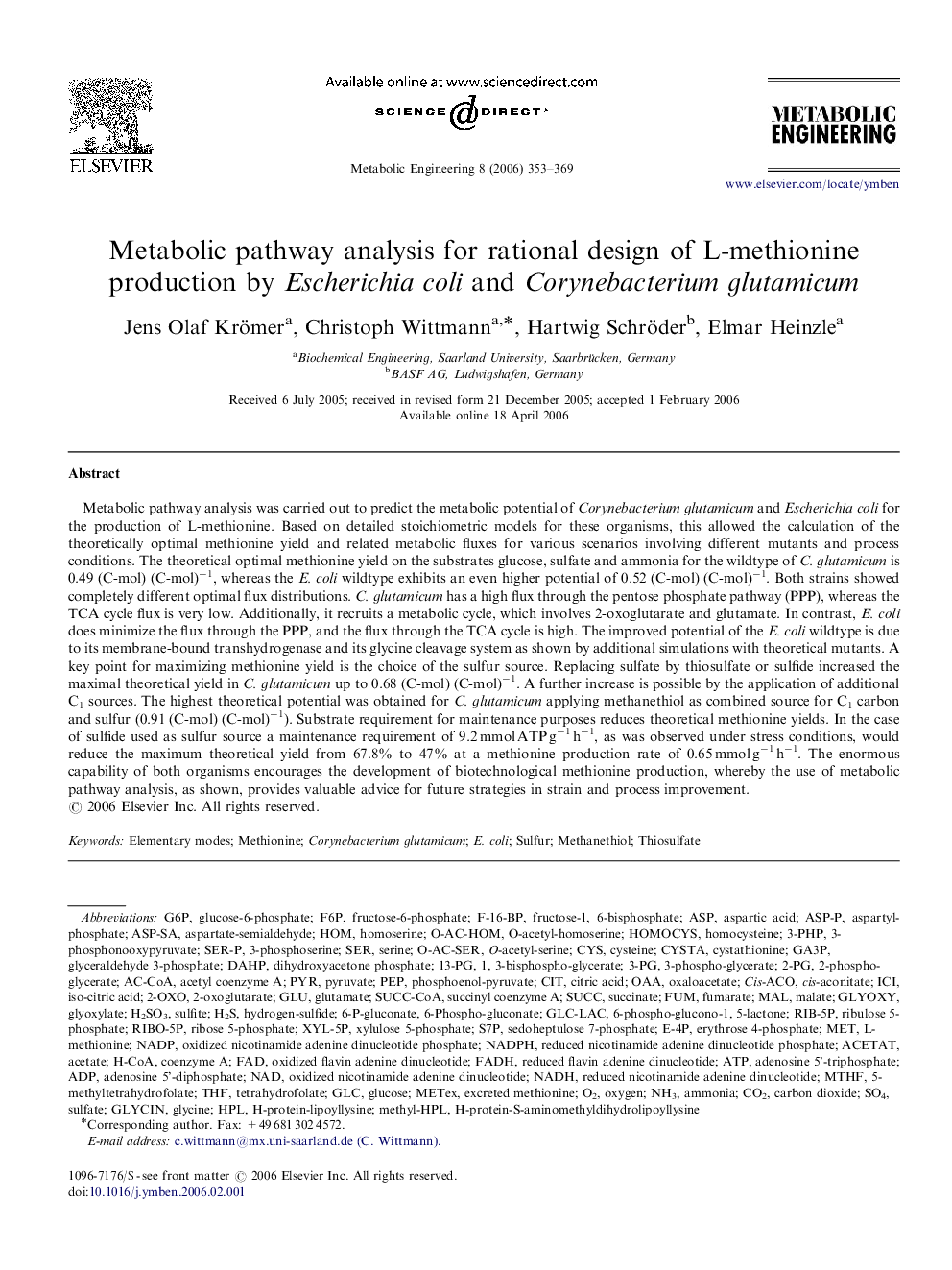| کد مقاله | کد نشریه | سال انتشار | مقاله انگلیسی | نسخه تمام متن |
|---|---|---|---|---|
| 31901 | 44850 | 2006 | 17 صفحه PDF | دانلود رایگان |

Metabolic pathway analysis was carried out to predict the metabolic potential of Corynebacterium glutamicum and Escherichia coli for the production of L-methionine. Based on detailed stoichiometric models for these organisms, this allowed the calculation of the theoretically optimal methionine yield and related metabolic fluxes for various scenarios involving different mutants and process conditions. The theoretical optimal methionine yield on the substrates glucose, sulfate and ammonia for the wildtype of C. glutamicum is 0.49 (C-mol) (C-mol)−1, whereas the E. coli wildtype exhibits an even higher potential of 0.52 (C-mol) (C-mol)−1. Both strains showed completely different optimal flux distributions. C. glutamicum has a high flux through the pentose phosphate pathway (PPP), whereas the TCA cycle flux is very low. Additionally, it recruits a metabolic cycle, which involves 2-oxoglutarate and glutamate. In contrast, E. coli does minimize the flux through the PPP, and the flux through the TCA cycle is high. The improved potential of the E. coli wildtype is due to its membrane-bound transhydrogenase and its glycine cleavage system as shown by additional simulations with theoretical mutants. A key point for maximizing methionine yield is the choice of the sulfur source. Replacing sulfate by thiosulfate or sulfide increased the maximal theoretical yield in C. glutamicum up to 0.68 (C-mol) (C-mol)−1. A further increase is possible by the application of additional C1 sources. The highest theoretical potential was obtained for C. glutamicum applying methanethiol as combined source for C1 carbon and sulfur (0.91 (C-mol) (C-mol)−1). Substrate requirement for maintenance purposes reduces theoretical methionine yields. In the case of sulfide used as sulfur source a maintenance requirement of 9.2 mmol ATP g−1 h−1, as was observed under stress conditions, would reduce the maximum theoretical yield from 67.8% to 47% at a methionine production rate of 0.65 mmol g−1 h−1. The enormous capability of both organisms encourages the development of biotechnological methionine production, whereby the use of metabolic pathway analysis, as shown, provides valuable advice for future strategies in strain and process improvement.
Journal: Metabolic Engineering - Volume 8, Issue 4, July 2006, Pages 353–369